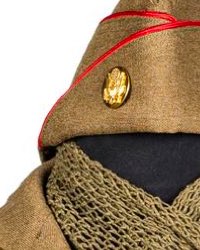No. 95320908

Detector
No. 95320908

Detector
Aesthetic and technical details
The Sirchie CGD100 Hydrocarbon Detector features a compact and ergonomic design, ideal for use in investigations. The device shows signs of careful use, with no visible damage or signs of wear. Its textured plastic finish ensures good durability.
Context about the brand and the model
Sirchie is a well-known brand in the field of criminology, specializing in the manufacture of investigative and laboratory equipment. The CGD100 model has stood out for its ease of use and effectiveness in detecting hydrocarbons, frequently used by professionals in the field of criminalistics and security.
Innovations or distinctive features
The CGD100 model includes advanced features such as sensitivity regulation and a hydrocarbon level indicator light, which allows for effective use in various detection situations. This specificity makes it suitable for environments where chemical substance identification is critical.
The Sirchie CGD100 hydrocarbon detector is presented as equipment in excellent condition, suitable for professional use.
The mentioned detector is accompanied by two specialized books:
Fire Dynamics: Origin and Cause of Fires - Vicent Pons y Grau - The best way to prevent, control, and extinguish a fire is to understand its origin, the heat source that causes it, and the factors that trigger it. Understanding the dynamics of a fire provides insight into how it could have been avoided, its spread restricted, and consequently, its effects mitigated. All investigations should follow a methodology based on field observations and sampling. Fire investigations that rely solely on witness statements are unscientific. We must never forget that, often in this field, what appears to be is not what actually happened. Just as in forensic medicine, in the engineering field that studies the origin and causes of fires, the scenario where the fires occurred explains how the events happened.
Applied Forensics to Fire and Explosion Investigation - Juan Diego González Piñatel - Training
Chapter 1: History of Fire
Chapter 2: Introduction to Fire Incidents
Chapter 3: Conducting an On-Site Inspection
Chapter 4: Protocols for Security Forces and Bodies
Chapter 5: Origin and Causes of Fires
Chapter 6: Fire and Explosion Incidents
Chapter 7: Forensics
Chapter 8: Burns Pathology
Chapter 9: Study of Combustion Accelerants in Charred Remains
Chapter 10: Types of Technical / Expert Reports
Chapter 11: Types of Surveys to Conduct
Chapter 12: Planning and Sketching
Chapter 13: Sample and/or Evidence Collection
Chapter 14: Concepts of Arsonist and Pyromaniac
Chapter 15: Exhumation Equipment
Chapter 16: Active and Passive Protection
Chapter 17: Legislation Applied to Fires
Chapter 18: Aircraft Accident Investigation
Chapter 19: The European Insurance Committee
Chapter 20: Glossary of Terms
You might also like
-
-
-
-
-
-
-
-
-
-
This object was featured in
How to buy on Catawiki
1. Discover something special
2. Place the top bid
3. Make a secure payment

